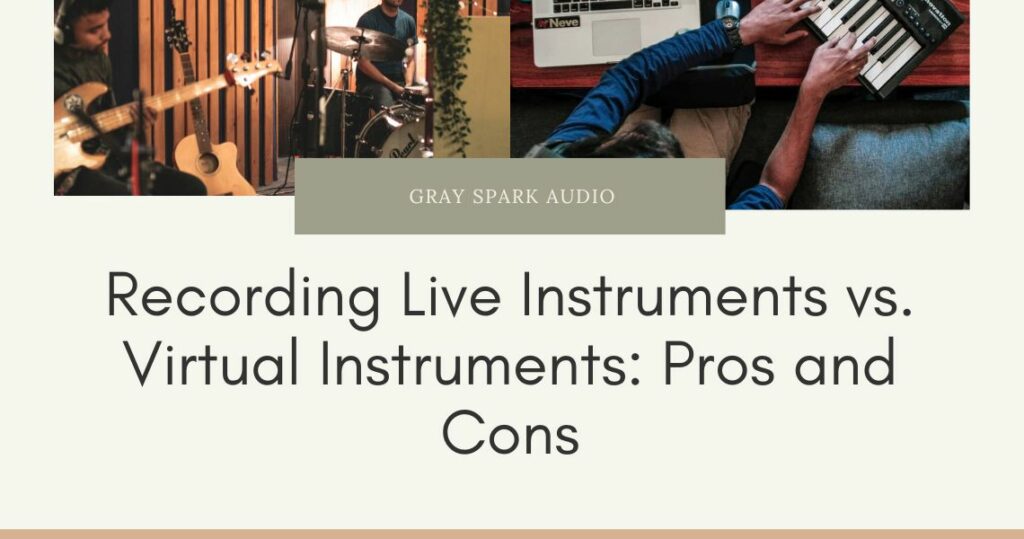
As a music producer, you may find yourself having to decide whether to record live instruments or use virtual instruments in your tracks. Both methods have their pros and cons, and understanding them can help you make the best decision for your music production needs. In this blog post, we’ll explore the advantages and disadvantages of both approaches.


Live Instruments
Pros:
- Authenticity: Live instruments provide a unique and authentic sound that can’t be replicated by virtual instruments.
- Emotion: Live performances can add an emotional and human touch to your music, making it more relatable to your audience.
- Versatility: Live instruments can be used to play various genres of music, and different musicians can bring their own unique playing styles and techniques.
Cons:
- Cost: Recording live instruments can be expensive, as you need to hire musicians, rent studio space, and pay for equipment and maintenance.
- Logistics: Scheduling recording sessions with multiple musicians can be challenging, and recording live instruments requires proper sound isolation and acoustics.
- Mistakes: Live performances can be prone to mistakes, and fixing them can be time-consuming and costly.
Virtual Instruments
Pros:
- Cost-effective: Virtual instruments are often less expensive than recording live instruments, as you only need to purchase the software and a MIDI controller.
- Flexibility: Virtual instruments offer a high degree of flexibility, allowing you to manipulate the sound in many ways, including changing the instrument, tempo, and key.
- Consistency: Virtual instruments produce a consistent sound that is not influenced by the player’s mood, skill level, or physical condition.
Cons:
- Artificiality: Virtual instruments can sound artificial or robotic if not used correctly, which can affect the quality and authenticity of your music.
- Limited expression: Virtual instruments lack the dynamic range and subtle nuances of live instruments, making it harder to add emotion and personality to your tracks.
- Learning curve: Using virtual instruments requires some knowledge of MIDI programming and music production software, which can be overwhelming for beginners.
Conclusion:
Both live and virtual instruments have their place in music production, and choosing the right approach depends on your goals, budget, and skills. If you are looking for authenticity and emotional impact, live instruments may be the way to go, but if you need flexibility and cost-effectiveness, virtual instruments can be a great choice. Ultimately, it’s up to you to decide which approach suits your music style and production needs.
At Gray Spark Audio – the best recording studio in India we blend the idea of both the sonics of a virtual instrument and a live recorded instrument this gives you a better sounding instrument with the human feel of the musician playing the instrument and the polished sonics of a vst.
© 2022 All Rights Reserved.

